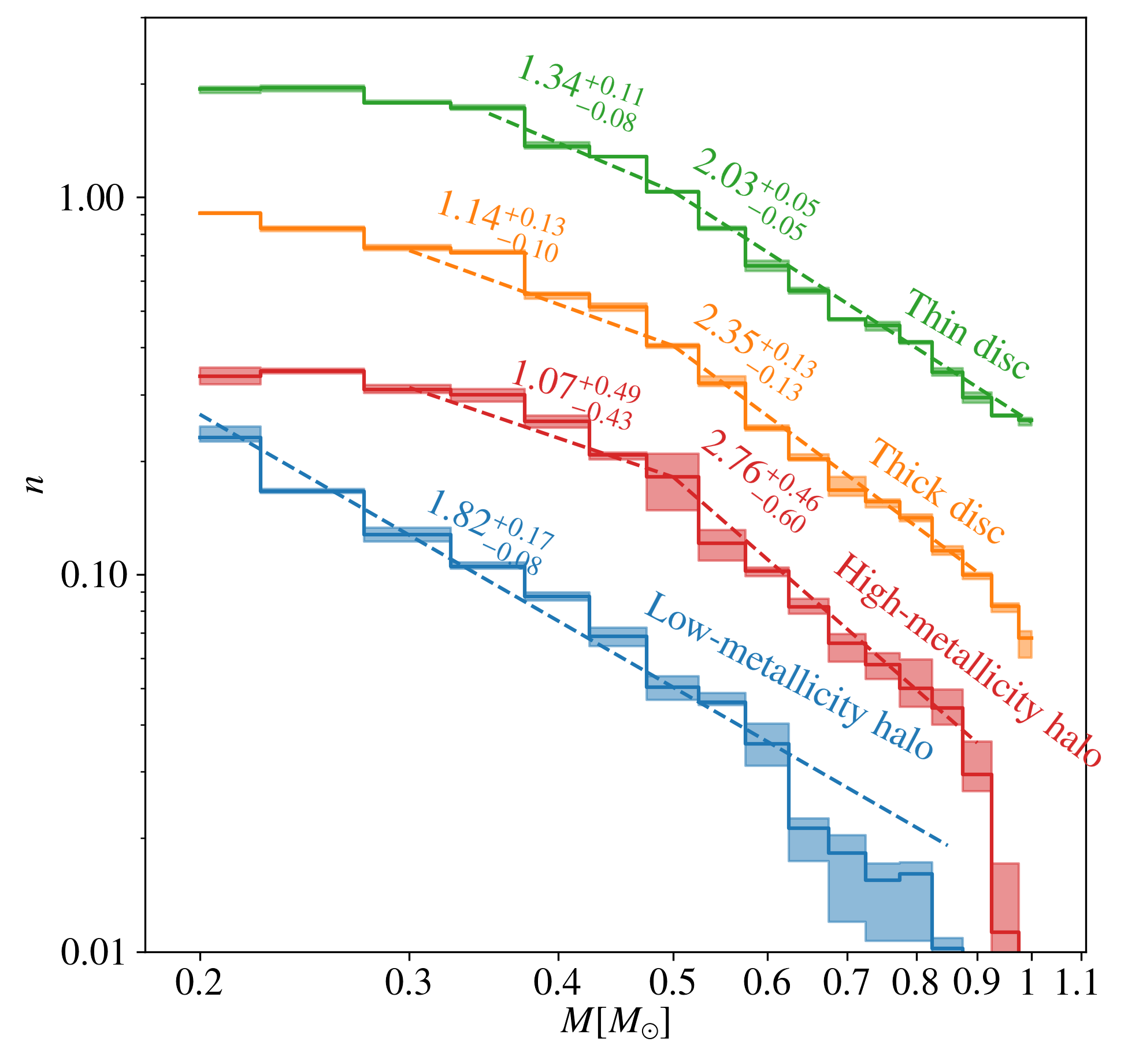The initial mass function
It has long been a major goal in astrophysics to measure the initial mass-distribution function (IMF) with which stars form. Countless theoretical predictions and interpretations of observations, in many astronomical sub-disciplines, rely on the assumption of an IMF. Even more important, perhaps, it has long been hoped that the observed IMF and its variations, if any, with cosmic time and star-forming environment, could serve as a fossil clue to the poorly understood process of star formation.
Until the last decade, opinions seemed to favour the existence of a universal IMF, even if discord remained regarding the exact details
of the IMF's functional form. More recently, however, evidence has been accumulating for IMF variations in at least some extra-galactic environments,
particularly in massive early-type galaxies.
Data from Gaia DR2 revealed that Milky Way halo stars are divided in the Hertzsprung-Russell diagram (HRD) into two parallel sequences,
a "blue" low-metallicity sequence and a "red" higher-metallicity locus. Various studies have shown that the blue halo is largely composed of stars that were
accreted from merged galaxies (see the paper below for references). Much, or perhaps all, of the red
halo, in turn, is composed of thick-disc stars that were heated by the encounter, i.e. the red
halo and the thick disc have essentially the same origin, with the thick disc itself probably being an ancient Milky Way pre-merger
structure that was heated and thickened by the merger.
Gaia DR2, for the first time, permits the analysis of large and complete stellar samples selected according to
kinematic component and metallicity, ideal for IMF determination.
The IMF range below ~1 M⊙ is particularly straightforward to probe, as stars in that mass range are
still in the main-sequence stage of their evolution, and therefore the current mass function and the IMF are one and the same
(i.e. no accounting is needed for stars that have evolved post-main-sequence, which would necessitate assumptions about star-formation history).
Thus, except for the need to deal with some observational effects (e.g. completeness, extinction, unresolved binaries), a count of stars
as a function of their masses gives an almost direct measurement of the IMF.
A bottom-heavy initial mass function for the accreted blue-halo stars of the Milky Way

We used Gaia DR2 to measure the IMF of stars within 250 pc and masses in the range 0.2 < m/M⊙ < 1.0, separated according to kinematics and metallicity, as determined from Gaia transverse velocity and location on the HRD. The predominant thin-disc population has an IMF similar to traditional (e.g. Kroupa 2001) stellar IMFs, with star numbers per mass interval dN/dm described by a broken power law, m-α, and index αhigh~2 above m~0.5, shallowing to αlow~1.3 at m~<0.5. Thick-disc stars and stars belonging to the "high-metallicity" or "red-sequence" halo have a somewhat steeper high-mass slope, αhigh~2.3 (and a similar low-mass slope αlow~1.1). Halo stars from the "blue sequence", which are characterised by low-metallicity, however, have a distinct, bottom-heavy IMF, well-described by a single power law with α~1.8 over most of the mass range probed. The IMF of the low-metallicity halo is reminiscent of the Salpeter-like IMF that has been measured in massive early-type galaxies, a stellar population that, like Milky-Way halo stars, has a high ratio of α elements to iron, [α/Fe]. Blue-sequence stars are likely the debris from accretion by the Milky Way, ~10 Gyrs ago, of the Gaia-Enceladus dwarf galaxy, or similar events. These results hint at a distinct mode of star formation common to two ancient stellar populations—elliptical galaxies and galaxies possibly accreted early-on by ours.
For further reading:
- Na'ama Hallakoun and Dan Maoz "A bottom-heavy initial mass function for the likely-accreted blue-halo stars of the Milky Way" 2021, Monthly Notices of the Royal Astronomical Society, 490, 657